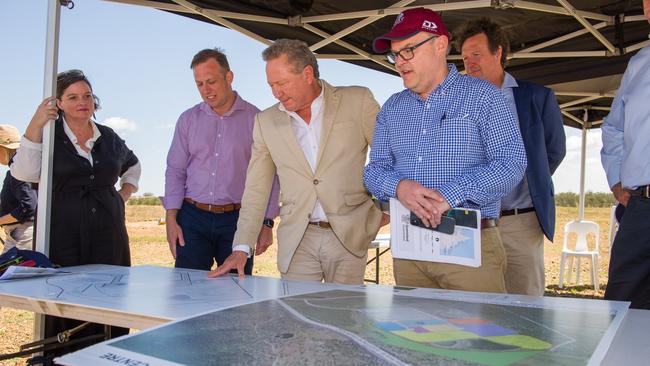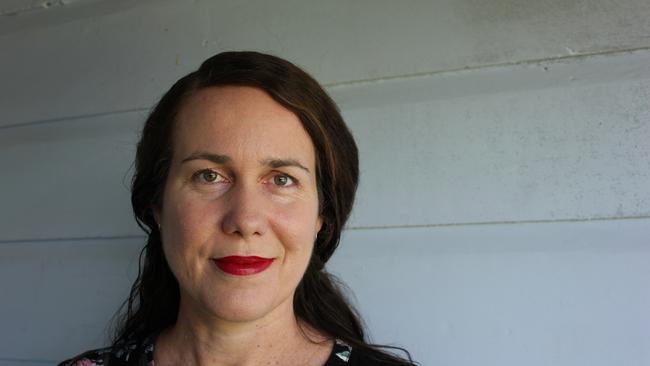Opinion: Beyond Zero Emissions Queensland project manager Dr Heidi Edmonds on Gladstone hydrogen
A Gladstone Renewable Energy Industrial Precinct could attract $8 billion in investment and create 11,000 new jobs.
Gladstone
Don't miss out on the headlines from Gladstone. Followed categories will be added to My News.
Gladstone is poised to capitalise on the green export revolution. Governments are laying the groundwork for this reality, and what’s needed next is a commitment to establish a Renewable Energy Industrial Precinct.
Energy think tank Beyond Zero Emissions’ latest report Export Powerhouse shows Australia could earn $333 billion a year in green exports by 2050 with a bit of government policy support.
Our previous report showed that a Gladstone Renewable Energy Industrial Precinct could attract $8 billion in investment and create 11,000 new jobs.
Other countries are already chasing these opportunities but Australia’s renewable energy resources and Gladstone’s industrial heritage give it an edge that is attractive to investors.
Recent exciting announcements show that the pieces are falling into place to diversify the energy mix and power Gladstone manufacturing with renewable energy at internationally competitive prices to capitalise on green exports of hydrogen, ammonia, aluminium and alumina.
The foundation of a “green export” vision is fast tracking public and private investment into enabling infrastructure such as a Renewable Energy Industrial Precinct.

Here are some recent key announcements that can help make this happen, and how they fit together to create an industrial ecosystem that is greater than the sum of its parts.
Many of these organisations spoke at the recent Gladstone Engineering Alliance Major Industry Conference and CQH2 Hydrogen Forum that I attended, a chance to share ideas and forge collaborations.
Rio Tinto in collaboration with Sumitomo Australia is showing support for renewable energy for manufacturing through the study of a possible hydrogen pilot plant at the Yarwun alumina refinery.
Rio Tinto is also the first industry stakeholder to co-sign a Statement of Cooperation with the Queensland Government to “seize the opportunities presented by clean energy”, and is looking at how it can underwrite long-term green offtake for its industrial assets.
Alpha HPA has signed an MOU with CleanCo for renewable electricity. Stanwell and Iwatani Corporation and other stakeholders are working towards a large-scale hydrogen project.
Local industries are showing the potential of collaboration within the Gladstone industrial ecosystem such as Alpha HPA having a supply agreement with Orica.

Fortescue Future Industries last week announced its Global Green Energy Manufacturing Centre (GEM) initially planned to build electrolysers, then expand into wind turbines, long-range electric cabling, and solar photovoltaic cells, supporting hundreds of jobs.
The plant will be one of the world’s largest hydrogen-equipment manufacturing plants. Fortescue Future Industries has also reached an agreement with manufacturer Incitec Pivot to study the feasibility of green ammonia production in Queensland, a key product with potential for use in transport, mining, fertiliser, and many other applications.
Hydrogen is continuing to generate hype in Gladstone with a Letter of Intent being signed between Hydrogen Utility (H2U) and Gladstone Ports Corporation, as well as other key stakeholders, to progress discussions on ammonia export facilities.

Just as local industry is getting excited about renewable energy and renewable manufacturing in Gladstone, Federal, State and Local governments are too.
The Gladstone Regional Council is a signatory to the Memorandum of Understanding for an H2Ecosystem along with Sumitomo Australia, as well as the Gladstone Ports Corporation, Australian Gas Networks as part of the Australian Gas Infrastructure Group, and CQUniversity Australia.

In addition to supporting renewable energy generation through government-owned corporations such as CleanCo, the Queensland Government is supporting renewable-powered manufacturing through its commitment to the Central Queensland Renewable Energy Zone (QREZ) with access to $2 billion funding to support renewable energy and renewable powered manufacturing jobs.
The Federal Government is showing support for Gladstone renewable energy powered manufacturing by supporting Rio Tinto’s hydrogen feasibility study through ARENA and also naming Gladstone as one of the Federal government’s “Clean Hydrogen Industrial Hubs” with access to part of $464 million in funding for hydrogen hubs as part of a $1.2 billion commitment towards building a hydrogen industry.
The government recognises the changing energy dynamics in the global market, and is supporting Gladstone to protect key energy trade relationships with Japan and Korea.
Diversifying Gladstone’s energy options and ensuring local manufacturing can invest in and use the technical options needed to use clean energy will allow it to become Australia’s most significant Export Powerhouse and protect and grow local jobs.
The final missing piece of the puzzle is a Gladstone Renewable Energy Industrial Precinct to ensure that heavy industry continues to manufacture and export Australian products to the world.
– Dr Heidi Edmonds is the Queensland Project Manager at Beyond Zero Emissions




